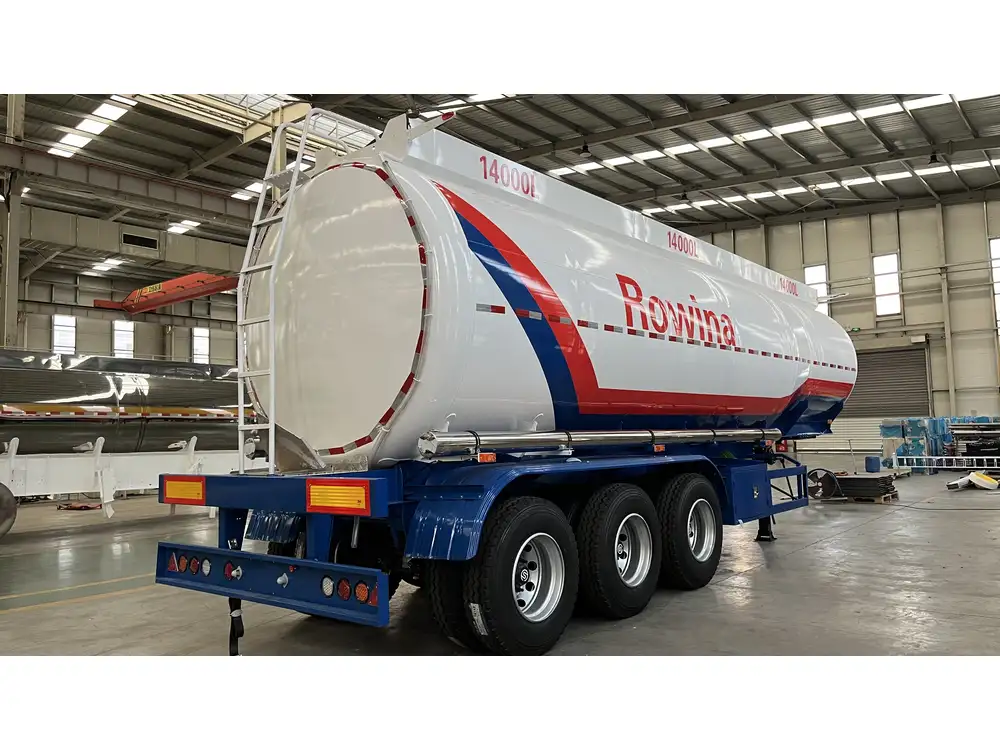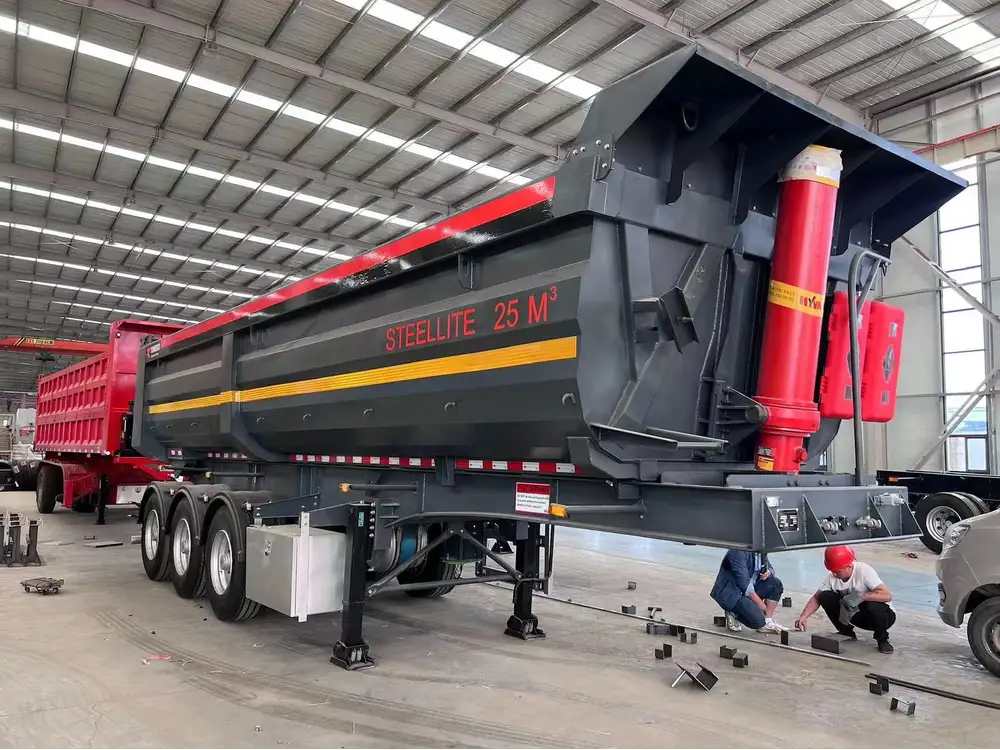Flatbed trailers are versatile workhorses in numerous industries, providing an efficient means of transporting materials and equipment. However, to maximize the utility of your flatbed trailer, adding sideboards can significantly enhance its load-carrying capabilities. In this guide, we will delve into everything you need to know about creating sideboards for your flatbed trailer—from materials and construction techniques to installation tips and best practices.
Understanding Flatbed Trailer Sideboards
What Are Sideboards?
Sideboards are vertical extensions that attach to the sides of a flatbed trailer, serving to contain and secure the cargo during transport. They come in various styles, materials, and heights, tailored to specific loading needs and preferences. Depending on the type of cargo you frequently transport, the design of your sideboards will vary accordingly to ensure safety and stability.

Why Are Sideboards Important?
- Enhanced Load Capacity: Sideboards increase the height of the trailer’s cargo area, allowing for taller items to be securely loaded without risk of falling off.
- Improved Safety: They provide added security for loose items, reducing the chances of cargo shifting during transit.
- Versatility: Sideboards can be designed to accommodate different types of loads, making your flatbed trailer adaptable for various use cases.
Material Selection for Sideboards
Choosing the right materials for your flatbed trailer sideboards is vital for durability and functionality. Below are some common materials along with their pros and cons:
| Material | Pros | Cons |
|---|---|---|
| Wood | Readily available, easy to work with, customizable | Susceptible to rot, requires maintenance |
| Steel | Extremely durable, offers high strength | Heavier, may rust without treatment |
| Aluminum | Lightweight, rust-resistant | More expensive, can dent easily |
| Composite | Resistant to weather, lightweight | Can be costly, limited availability |
Choosing the Right Thickness
Regardless of the material chosen, ensure you select an adequate thickness. For wood, a thickness of at least 1 inch is advisable to avoid warping and bending. If you opt for metal sideboards, consider using at least 14 gauge steel or 1/8 inch aluminum for optimal strength.

Tools and Equipment Needed
Before beginning the construction of your sideboards, gather the necessary tools and equipment:
- Circular saw or table saw (for cutting wood)
- Welding machine (for metal sideboards)
- Drill and drill bits
- Measuring tape
- Level
- Tape measure
- Screwdriver
- Fasteners (screws, bolts, etc.)
- Safety gear (gloves, goggles, etc.)
Step-by-Step Guide to Making Sideboards for Your Flatbed Trailer
Step 1: Measure Your Trailer
Begin by accurately measuring your flatbed trailer’s dimensions, focusing on the height and length of the sides where the sideboards will be attached. Use a tape measure to ensure your measurements are precise. Typically, sideboards can range from 12 to 30 inches in height, depending on your cargo requirements.

Step 2: Design Your Sideboards
Create a simple design layout that meets your specific needs. Sketch your proposed sideboard design, including the height and width, as well as any potential cutouts or reinforcements. This sketch will serve as your guide throughout the construction process.
Step 3: Cut the Material
Using your measurements, cut your chosen material to size. If you are using wood, ensure clean, straight cuts with a circular saw or table saw. When working with metal, a plasma cutter or metal saw may be necessary to achieve precise dimensions.
Step 4: Assemble the Framework
For added strength and support, construct a framework for your sideboards:
For Wooden Sideboards: Use 2×4 lumber to create a frame. Assemble the boards using screws or nails, ensuring that joints are reinforced.
For Metal Sideboards: Weld the metal pieces together, ensuring strong, solid joints. Use a square to check angles and alignments.

Step 5: Attach the Sides
Once your framework is ready:
- For Wood: Securely attach the wooden panels to your frame using screws. Ensure each panel is level and properly aligned.
- For Metal: Use brackets or weld in place to secure the side panels to the frame.
Step 6: Install the Sideboards on the Trailer
Align the sideboards with the sides of the flatbed trailer. Ensure that they are vertically level, using a level tool for verification. Attach the sideboards to the trailer’s body using heavy-duty bolts or screws, depending on the material of both the trailer and the sideboards. This step is crucial for guaranteeing that your sideboards withstand the pressure of the load during transport.
Step 7: Add Support Braces (Optional)
For heavier loads, consider adding support braces. These can be diagonal metal rods or extra wooden beams that connect the sideboards back to the trailer frame. This reinforces the sideboards’ stability, preventing any undue flexing or bending.

Step 8: Finish and Seal
- For Wood: Sand the surfaces and apply a protective finish, such as a sealant or paint, to protect against the elements.
- For Metal: If you used steel, consider applying a rust-proof paint or coating to prolong the life of your sideboards.
Best Practices for Using Flatbed Trailer Sideboards
- Load Distribution: Always distribute cargo evenly across the trailer. This prevents unnecessary stress on any one section of the sideboards.
- Regular Inspections: Frequently inspect your sideboards for signs of wear or damage. Tighten loose screws and check for rust or rot.
- Height Considerations: When loading, be mindful of the trailer’s overall height limit, especially if you plan on traveling under low clearances.
- Secure Your Cargo: Always use appropriate tie-downs, straps, or tarps to secure your load. Sideboards alone do not secure your cargo; they offer containment.
Common Challenges and Solutions

Problem: Sideboards Flexing Under Load
Solution: Ensure proper mounting methods are utilized, and consider adding reinforcing support braces. Also, verify that your sideboards are securely fastened to the trailer frame.
Problem: Rust on Metal Sideboards
Solution: Regularly inspect and maintain your metal sideboards. Apply protective coatings and ensure any scratches are painted over to prevent rust from spreading.
Problem: Sideboards Becoming Loose Over Time
Solution: Establish a routine check-up system, especially before long hauls. Tighten fasteners and bolts regularly to maintain security.

Conclusion
Creating sideboards for your flatbed trailer is a project that, while requiring some effort and planning, can significantly enhance its versatility and usefulness. With the right materials, proper construction methods, and regular maintenance, your sideboards will provide the necessary support and security for all your transport needs. Whether you are in construction, logistics, or hauling, these enhancements will help safeguard your cargo, making your flatbed trailer an even more invaluable asset. So roll up your sleeves, gather your materials, and embark on crafting your own sideboards—a testament to functional ingenuity in the realm of transport logistics!



